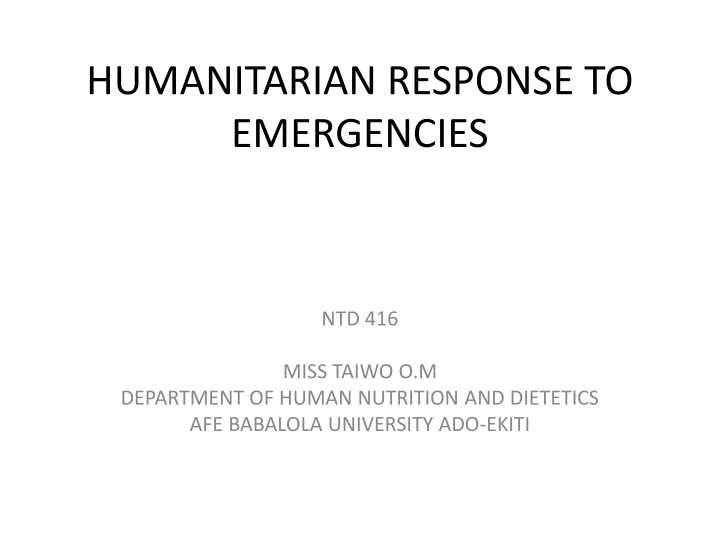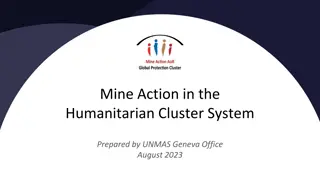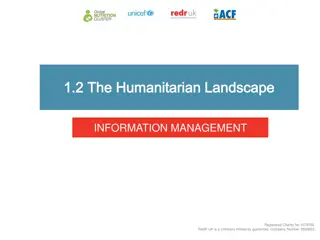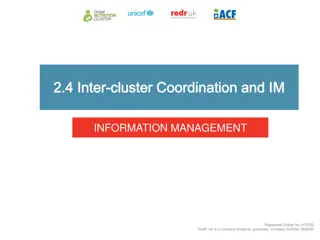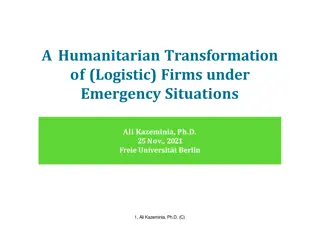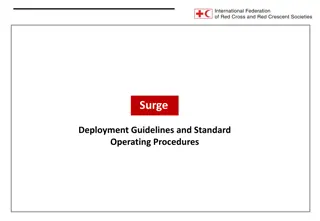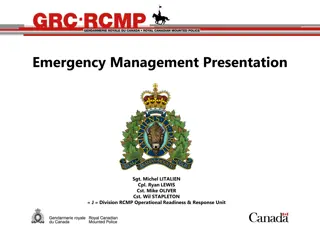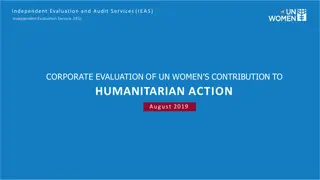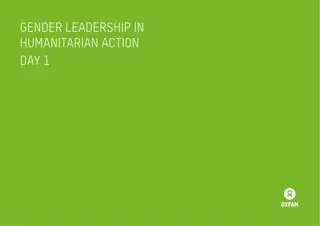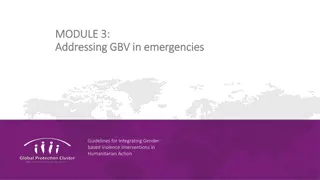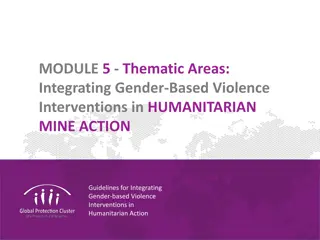Humanitarian Response to Emergencies: Overview of Principles and Mechanisms
The international humanitarian system involves various organizations and processes to provide assistance during emergencies, focusing on principles like humanity and funding mechanisms such as Consolidated Appeals Process (CAP). Roles and responsibilities of UN agencies, donors, Red Cross Movement, and NGOs are highlighted in this comprehensive guide.
Download Presentation

Please find below an Image/Link to download the presentation.
The content on the website is provided AS IS for your information and personal use only. It may not be sold, licensed, or shared on other websites without obtaining consent from the author.If you encounter any issues during the download, it is possible that the publisher has removed the file from their server.
You are allowed to download the files provided on this website for personal or commercial use, subject to the condition that they are used lawfully. All files are the property of their respective owners.
The content on the website is provided AS IS for your information and personal use only. It may not be sold, licensed, or shared on other websites without obtaining consent from the author.
E N D
Presentation Transcript
HUMANITARIAN RESPONSE TO EMERGENCIES NTD 416 MISS TAIWO O.M DEPARTMENT OF HUMAN NUTRITION AND DIETETICS AFE BABALOLA UNIVERSITY ADO-EKITI
INTRODUCTION The international humanitarian system includes a wide range of organisations, agency groupings and inter-agency processes that all combine to enable international humanitarian assistance to be channelled to those locations and peoples in need of it In any emergency, response will start at the local level. Individuals, businesses, community groups and local government will be the first to act. This is then bolstered by regional and national-level support and potentially international involvement. The humanitarian system are the United Nations (UN) agencies, the International Red Cross Movement, nongovernmental organizations (NGOs) and donor agencies.
Fundamental Humanitarian Principles Humanity Impartiality Independence Neutrality
Funding Mechanism for Humanitarian Response Consolidated Appeals Process (CAP) - Tool to help plan, coordinate, fund, implement and monitor aid responses to emergencies. Central Emergency Response Fund (CERF) - grant facility with up to US$450 million
Roles and Responsibilities There are four groups of actors primarily active during a nutrition emergency. These are: UN agencies and bodies Donors The Red Cross Movement NGOs
1. United Nation Agencies The United Nations humanitarian system is composed of six key actors: United Nations High Commissioner for Refugees (UNHCR) World Food Programme (WFP) United Nations Children s Fund (UNICEF) World Health Organization (WHO) Food and Agriculture Organization (FAO) United Nations Development Programme (UNDP)
2. The Red Cross Movement They are found in almost every country. They act as auxiliaries to the public authorities of their own countries in the humanitarian field and provide a range of services including disaster relief, health and social programmes Try to ensure civilians not taking part in hostilities are spared and protected. Visit prisoners of war and security detainees. Transmit messages to and reunite family members separated by armed conflict Help to find missing persons Offer or facilitate access to basic health care services Provide urgently needed food, safe drinking water, sanitation and shelter
3. Donors ECHO (European Commission s Humanitarian Aid and Civil Protection Office) - ensure goods and services get to emergency affected areas quickly. - ECHO grants cover emergency aid, food aid and aid to refugees and displaced persons. They are worth a total of over 700 million a year. The United States Agency for International Development (USAID) - provides economic, development and humanitarian assistance in support of the foreign policy goals of the United States. The USAID Administrator is the US President s Special Coordinator for International Disaster Assistance.
4. NGOs The term encompasses a wide variety of agencies, with different missions, ethical frameworks, competencies and approaches to emergencies. Funding is often a defining characteristic of NGOs. Sources and mechanisms of funding vary enormously. Some NGOs (especially in the USA) are largely dependent upon governments, while others have developed mechanisms to access large amounts of private (business/foundation/ corporation) and public funding (through church/mosque,merchandising, retail and other means). They are responsible for most of the nutritional surveys conducted during emergencies.
The Role of Other Actors in Nutrition in Emergencies Military Private Companies - Private companies have been especially prominent in the development of, and demand for, special ready-to-use food products used in the treatment of severe and/or moderate acute malnutrition.
